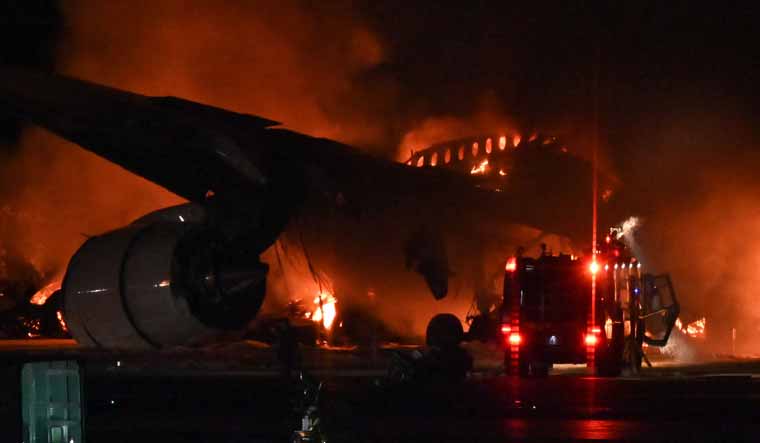The world watched with bated breath as Japan Airlines JAL flight 516, carrying all 379 people, burst into flame after collision with an earthquake relief aircraft at Tokyo’s Haneda airport on Tuesday.
Though all five onboard the second aircraft, operated by the Japan Coast Guard, perished, the passengers onboard the JAL aircraft had a miraculous escape. Footages from Haneda show within minutes of the plane turning into an inferno, all passengers slid down emergency chutes to get away from the plane.
Even for a country that prides itself on its aviation safety, the fete was remarkable and showcased the efficiency of modern safety standards, including the crashworthiness of the aircraft, and Japan Airlines’ own rigorous safety culture. "I think there are a lot of things that come together to allow people to get off an aeroplane like this without dying," Robert Sumwalt, former chair of the National Transportation Safety Board, told CBS News.
Sumwalt added that one factor at play in Tuesday's evacuation was the crash-worthiness of modern jetliners today. "The interiors of newer aeroplane models are built to withstand fire. The side walls don't burn as quickly as they would in previous aeroplanes," he said.
"The aeroplane fuselages made from carbon-composite fibres instead of conventional aluminium skins likely protected the passengers from the fire by not burning through for some time," safety consultant John Cox told AP.
The way the evacuation procedures were carried out also contributed to the successful evacuation of the passengers, which hints at the professionalism of the cabin crew.
Footages from the airport show passengers proceeding quickly but calmly down the inflatable evacuation slides and then jogging away from the plane. "The flight attendants told us to stay calm and instructed us to get off the plane," one passenger, Satoshi Yamake, 59, said to Reuters.
According to Graham Braithwaite, professor of safety and accident investigation at the UK’s Cranfield University, the crew training and safety measures were key. "It’s such a severe impact for any aircraft to have to withstand. But knowing what I know about that airline, and how much effort they put into safety and into crew training, the fact that they did do such a good job shouldn’t be such a surprise," Braithwaite told CNN.
Braithwaite says the successful evacuation is absolutely a positive for Japan Airlines. "If you want to see a reason why you should fly with them, I think this is it," he says.
He believes the Japanese learnt lessons from the 1985 JAL accident which killed 520 out of the 524 onboard. "Clearly the effect was profound on the airline. In a culture like Japan’s, they took that responsibility as a group and wanted to make sure nothing like that ever happened again. So when things go wrong, they see it in terms of how they can learn. Everything is an opportunity to improve," Braithwaite added.
"They have a very strict culture around standard operating procedures and doing everything properly. That’s one of the reasons in this case I think the crew seems to have performed so well," he says.
Experts believe the reason for the crash was likely a human error.


